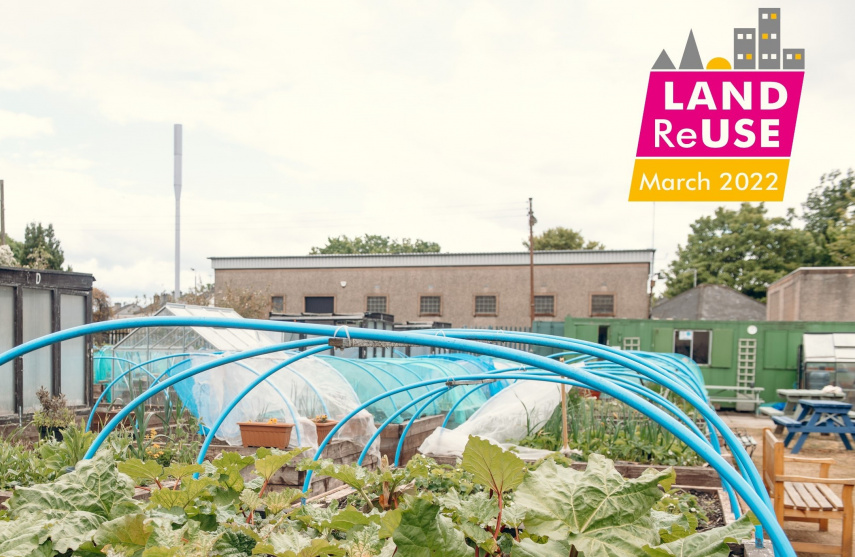Land Reuse - Useful Resources
We held Land Reuse Month in March 2022 which explored how to support delivery of land reform in the public sector.
Leadership by the public sector can help bring land back into use, transforming Scotland’s approach to tackling the legacy of derelict land, and ensuring that it is no longer acceptable to allow land to fall into long term disrepair.
We have put together some of the resources mentioned in the Land Reuse sessions to help provide information, guidance and support for organisations looking to transform their approach to land.
We hope you find this useful, if you would like more information or to speak to one of the team please contact us on info@landcommission.gov.scot or call 01463 423 300.
Funding and support
Asset Transfer Route Map - Communities
This route map has been developed by Community Ownership Support Service (COSS) to help identify where you are in the process, as laid down in Part 5; Asset Transfer, in the Community Empowerment (Scotland) Act 2015. It helps guide you through the steps along the way to achieving your goals. Side one of the poster shows the four phases of the asset transfer process and signposts each phase of the journey. Side two gives more detail and links to relevant information for each phase.
Community Wealth Building Guidance
Our guidance on community wealth building sets out practical actions that public bodies can take to use and manage land productively and in the public interest.
Community Wealth Building – Useful References and Resources
These references and resources provide helpful information, guidance and advice on a range of issues relating to community wealth building and land rights and responsibilities, and to the actions set out in the Commission’s Community Wealth Building and Land guidance.
Community Ownership Support Service (COSS)
Delivered by the Development Trusts Association Scotland (DTAS), the COSS is funded by the Scottish Government to support the sustainable transfer of public assets into community ownership and control. In addition to supporting communities through the asset transfer process, this adviser-led service provides public bodies with bespoke advice and support in the development and implementation of their asset transfer process and procedures.
The Scottish Land Commission has produced a framework to support practioners to guage the impact of vacancy and dereliction on a community's wellbeing and health. This is based on research that assessed the consequences of vacant and derelict land on communities.
Guidance on assessing the impact of reuse of land
This is an additional tool that can sit alongside existing appraisal processes and intends to inform how land reuse and regeneration projects can deliver wider benefits and support Scotland's National Outcomes including net-zero and health and wellbeing objectives. It uses Scotland's Performance Framework as a basis for its indicators.
Vacant and derelict land funding sources
Looks at a range of funding sources for bringing vacant and derelict land back into use.
Good practice examples
We have a range of protocols, guidance, training webinars and supporting material on how to put the principles of the Land Rights and Responsibilities Statement into practice:
Land Rights and Responsibilities Principle: Community Engagment
Land Rights and Responsibilities Principle: Transparency of Ownership and Land Use Decision-Making
Land Rights and Responsibilities Principle: Land Ownership by Charities and Private Trusts
Land Rights and Responsibilities Principle: Good Stewardship of Land
Transforming vacant and derelict land
A range of tools, resources and case studies including a map of Scotland's long-term derelict urban sites.
The value of early engagement with communities in decisions relating to land
The Scottish Land Commission undertook research to understand the added value of early community engagement in planning and land use decisions. The findings have informed a webinar, case studies, guidance and practical resources about good practice in relation to doing effective community engagement early on in the development process.
Community-led action on vacant and derelict land
A handy guide to help guide communities to finding out how they can bring unloved places back into use
Map of long-term, derelict urban sites
List of Scotland's Long-term Derelict Urban Sites Since 2000s or Earlier (as based on the Scottish Vacant and Derelict Land Register).
Our Place is a site devoted to promoting the benefits of place and place-based working, developed by the partners behind the Place Standard tool.
Background information
The Scottish Land Rights and Responsibilities Statement
The Statement seeks to inform policy and practice around land issues in Scotland. It applies to all urban and rural land, buildings and other infrastructure in Scotland, and it is equally relevant to all the people and communities of Scotland, whether land owner, land manager, tenant or land user. The principles underpin the Scottish Government's vision for a stronger relationship between the people of Scotland and the land, where ownership and use of land delivers greater public benefits through an accountable and transparent system of land rights and responsibilities.
Vacant and Derelict Land Taskforce
The Vacant and Derelict Land Taskforce brought together senior representatives from around 30 businesses, public bodies and third sector organisations who worked together to transform Scotland's approach to bringing vacant and derelict land back into use.
Place and wellbeing: integrating land use planning and public health in Scotland
A new briefing developed by the Spatial Planning, Health and Wellbeing Collaborative, raises awareness of the impact that the places where people live, work and play have on their health and wellbeing. It provides practical guidance for land use planners, public health practitioners and policy makers to work together, using a whole systems approach to improve health and wellbeing and reduce health inequalities.

